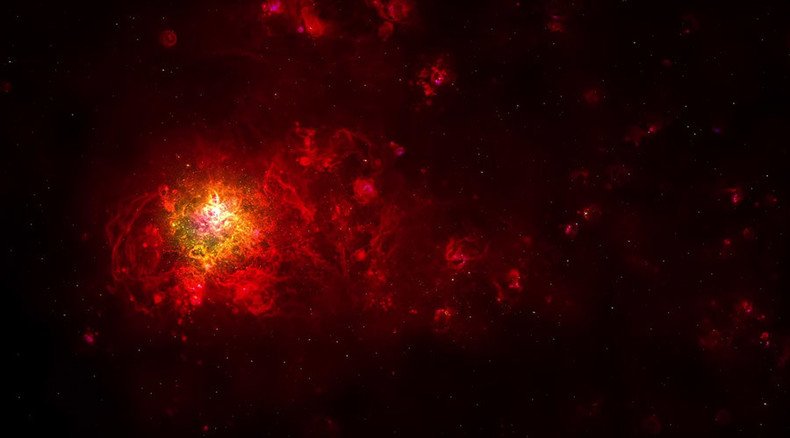Astronomers find ‘surprise’ pulsar, ‘most important planet ever’ outside solar system

Space-watchers have a lot of news to digest after the discoveries of a new pulsar in a faraway galaxy. A Venus-like exoplanet was also spotted, a mere 39 light-years away, and a rocky dwarf planet in our own solar system.
NASA announced on Thursday that its Fermi space telescope has found a gamma-ray pulsar in another galaxy. Dubbed PSR J0540-6919, the rapidly spinning neutron star lies outside the Tarantula Nebula in the Large Magellanic Cloud, a galaxy about 163,000 light-years away.
“It's now clear that a single pulsar… is responsible for roughly half of the gamma-ray brightness we originally thought came from the nebula,” said Pierrick Martin, an astrophysicist at the National Center for Scientific Research (CNRS) in Toulouse, France, and lead researcher on the project. "That is a genuine surprise."
Pulsars are neutron stars, left over from supernova explosions. The rapidly spinning magnetic field of the extremely dense star core sends out beams of radio waves, visible light, X-rays and gamma rays. J0540 spins just under 20 times per second, according to data obtained by the Fermi probe.
Another rare characteristic of the J0540 is its age: The pulsar is roughly 1,700 years old, while most of the other 2,500 known pulsars ranged in age between 10,000 and hundreds of millions of years. Prior to the launch of the Fermi in 2008, only seven gamma-ray pulsars had been discovered. The mission has since found more than 160.
News about J0540 came on the heels of the announcements of two planetary discoveries much closer to home. Using an array of 40-meter telescopes at the Cerro-Tololo Inter-American Observatory in Chile, astronomers found a Venus-like planet a mere 39 light-years away.
The planet orbits Gliese 1132, an M-class red dwarf star in the Vela constellation. The star is only 21 percent the size of the sun, and emits only one-half a percent as much light, which enabled the astronomers to detect a planetary transit.
According to the observations, GJ 1132b is only 1.2 times the mass of Earth, and appears to be a rocky world with an atmosphere. Writing in the journal Nature, scientists at the Massachusetts Institute of Technology have dubbed it the “closest Earth-sized exoplanet yet discovered.”
“GJ 1132b [is] arguably the most important planet ever found outside the solar system,” wrote Drake Deming, an astronomer at the University of Maryland, in a letter to Nature. He added that its proximity will “allow astronomers to study the planet with unprecedented fidelity.”
New Dwarf Planet In Our Solar System May Be The Farthest One Yet https://t.co/VnsW5Pj7h6#scifi
— Celia Troy (@scificelia) November 12, 2015Another staggering discovery this week came from a terrestrial telescope high up on Hawaii’s dormant volcano Mauna Kea. A team of astronomers working at the Subaru telescope found an icy dwarf planet orbiting on the outer edge of our solar system.
An icy body 500-1000 km wide, the V774104 is 9.6 billion miles (15.4 billion kilometers) from the Sun.
"We can't explain these objects' orbits from what we know about the solar system," said Scott Sheppard from the Carnegie Institution for Science in Washington, DC, who announced the discovery at a meeting of the American Astronomical Society. The findings may require astronomers to re-examine the existing model of the solar system’s origins, he added.













